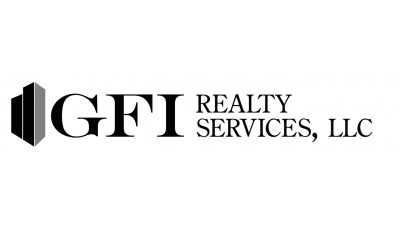Rezoning Initiatives Transform NYC Retail Corridors

In 2005, Williamsburg took its first major steps toward becoming the destination for young professionals it is today. Rezoning initiatives by city officials transformed 75 blocks of industrial property along the East River into residential development, part of a plan to bring the spirit and economic activity of Manhattan’s East Village to Brooklyn.
The plan worked. Williamsburg’s population has grown by 8.9% since 2000, Point 2 Point Homes reported, and rents increased by over 78%, according to New York University's Furman Center. Rezoning efforts led to a burgeoning retail and nightlife scene geared toward the influx of young professionals. Night markets and concert venues replaced old warehouses. The area is home to the Brooklyn Winery, New York Distilling and Brooklyn Brewery. Broadway Stages, a film and television studio, is also located in the area. The Wythe Hotel opened in spring 2012, with its rooftop bar quickly becoming a summer destination.
The number of businesses in Williamsburg grew by 32% between 2003 and 2011, according to a New York state report, compared to a 21% gain borough-wide. Williamsburg has become a case study for the impact rezoning can have on retail development. In an economy where brick-and-mortar stores compete for consumer attention with burgeoning e-commerce players, walkable shopping destinations continue to perform well.
Rezoning in Williamsburg was part of former Mayor Michael Bloomberg’s initiative to convert 40% of the city’s industrial acreage to commercial and residential use. But these efforts in Brooklyn, and the rest of New York City, have not been without controversy. Residents of rezoned neighborhoods have often criticized the city for choosing denser development and taller buildings over the preservation of a neighborhood’s character.
Along Fourth Avenue in Park Slope, upzoning in 2003 allowed developers to build residential high-rises on the commercial corridor, Crain's reported. But the plan to activate street-level properties with new retail failed to stick. Storefronts remained empty and a U-Haul depot and taxi depot discourage walkability.
New development projects are now required to include ground-level retail. Similar to Williamsburg, companies like Threes Brewing balance social, retail offerings with makerspaces like breweries and furniture manufacturers, which appeal to a younger demographic. With more careful planning calling for mixed-use projects that include retail, rezoning can reinvigorate a community, allow for more affordable housing and promote local businesses.

Rezoning On The Horizon
Learning from past mistakes, rezoning efforts throughout other areas of New York City focus on encouraging mixed-use development, particularly retail. In East Harlem, the City Council approved a rezoning plan last November that would increase building density in the area. Among the modifications was an increase in building height caps along major streets, a $50M investment in public housing and another $25M for the construction of an outdoor market and event space.
Among the projects emerging from East Harlem’s rezoning is the 37-story Sendero Verde complex. The developers, Jonathan Rose Cos. and L+M Development Partners, filed building permits for the complex’s first 384-unit building — out of a total 655 apartments — earlier this month. In addition to retail and office space, Sendero Verde will offer a YMCA facility, a charter school, a health-foods market and community spaces including nonprofit offices and a Mount Sinai community health center, adding to the neighborhood’s existing community spaces.
Beyond retail and community facilities, affordability has remained a concern among neighborhood activists, who worry that development in low-income, minority communities could displace longtime residents. East Harlem’s rezoning is part of Mayor Bill de Blasio’s goal to create 300,000 affordable homes by 2026. Rezoning in East Harlem will result in 1,288 affordable units spread across private development sites. The Sendero Verde development, for instance, will offer all its units at below-market-rate prices.
This past March, the City Council also approved the rezoning of Jerome Avenue, the first in the Bronx under de Blasio. The rezoning plan preserves 2,500 units of existing affordable housing, Curbed reported. A collection of one- and two-story warehouses and auto body shops, the 92 blocks around Jerome Avenue will soon be home to residential high-rises as tall as 145 feet. Because the 4 train runs along Jerome Avenue on an elevated railway and the B and D trains run on the nearby Grand Concourse, the area planned for rezoning presents an opportunity to create a well-connected retail corridor.
Rather than remove existing light industrial business outright, the city has also agreed to create a fund of $1.5M to help owners of the area’s auto body shops relocate. The overall capital investment in the area will total $189M.
In Brooklyn, remaining industrial areas like Gowanus are still awaiting rezoning approval, but a transformation is already taking place. Once an industrial hub, Brooklyn residents are choosing the canal-side neighborhood as an affordable alternative to neighboring Park Slope. Recent updates to the existing rezoning plan call for more open and green space along the Gowanus Canal, promoting walking and biking in the neighborhood and preserving existing New York City Housing Authority buildings.
Rezoning would also make way for apartment buildings that could range from six to 22 stories, Commercial Observer reported. Artist studios, bars and mom-and-pop retail have already cropped up in the area, and as efforts to clean up the eponymous canal continue, the area could soon offer recreational activities comparable to other rezoned waterfront areas like DUMBO.
Download GFI Realty Services’ market report to learn more about the impact rezoning can have on the city’s retail landscape.
This feature was produced in collaboration between Bisnow Branded Content and GFI Realty Services. Bisnow news staff was not involved in the production of this content.

